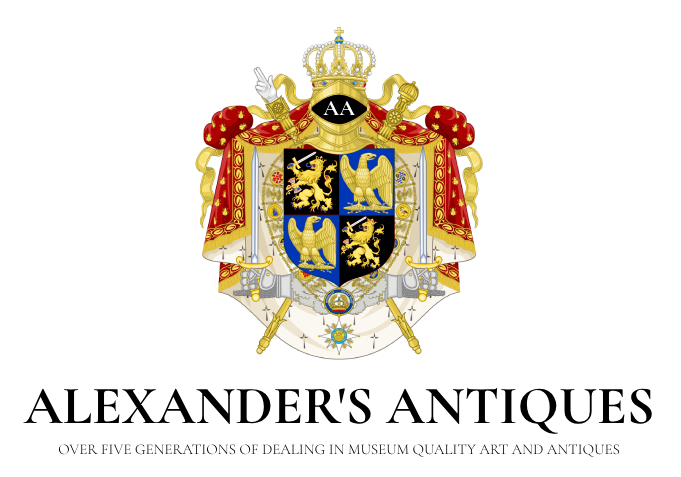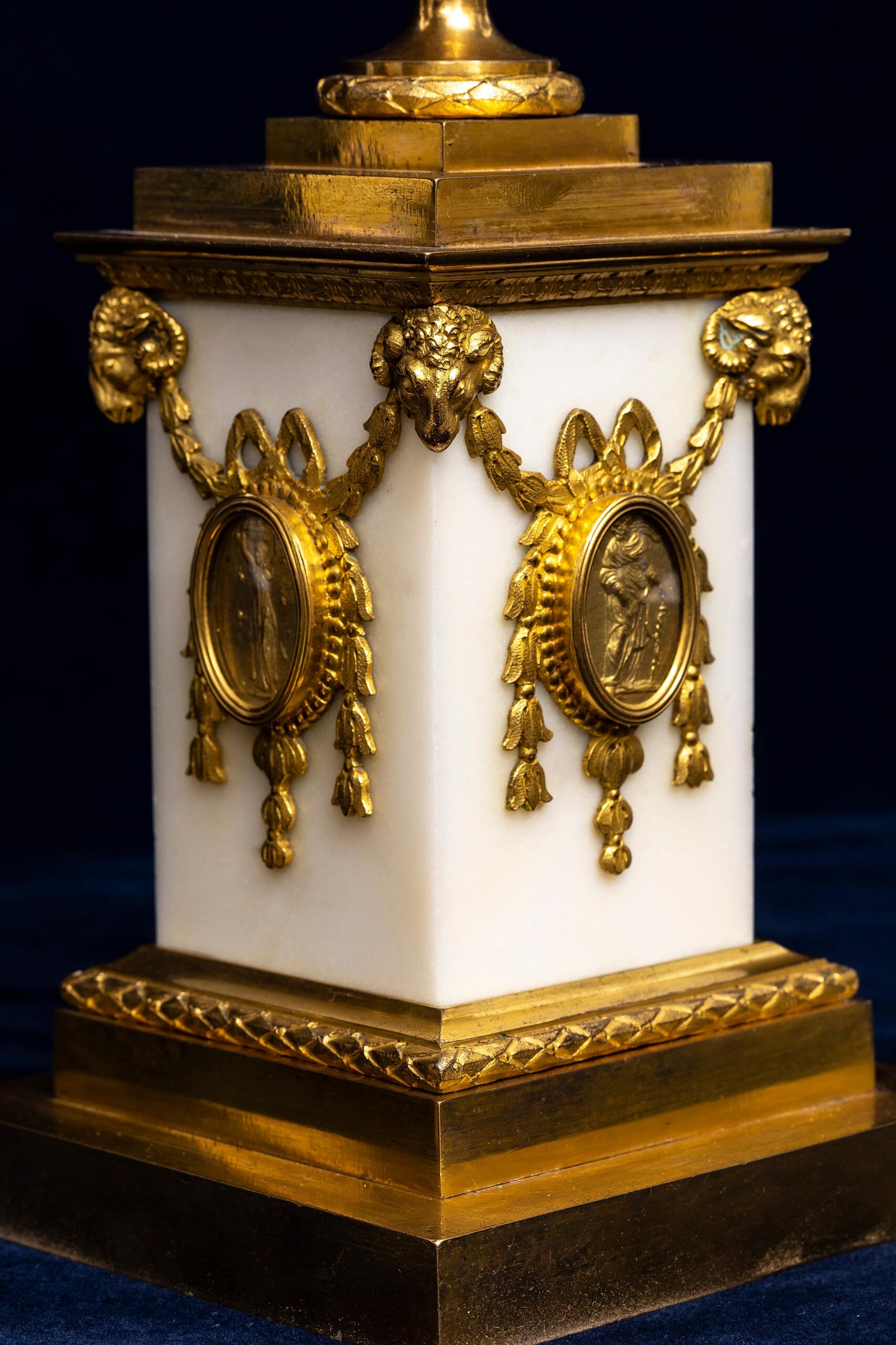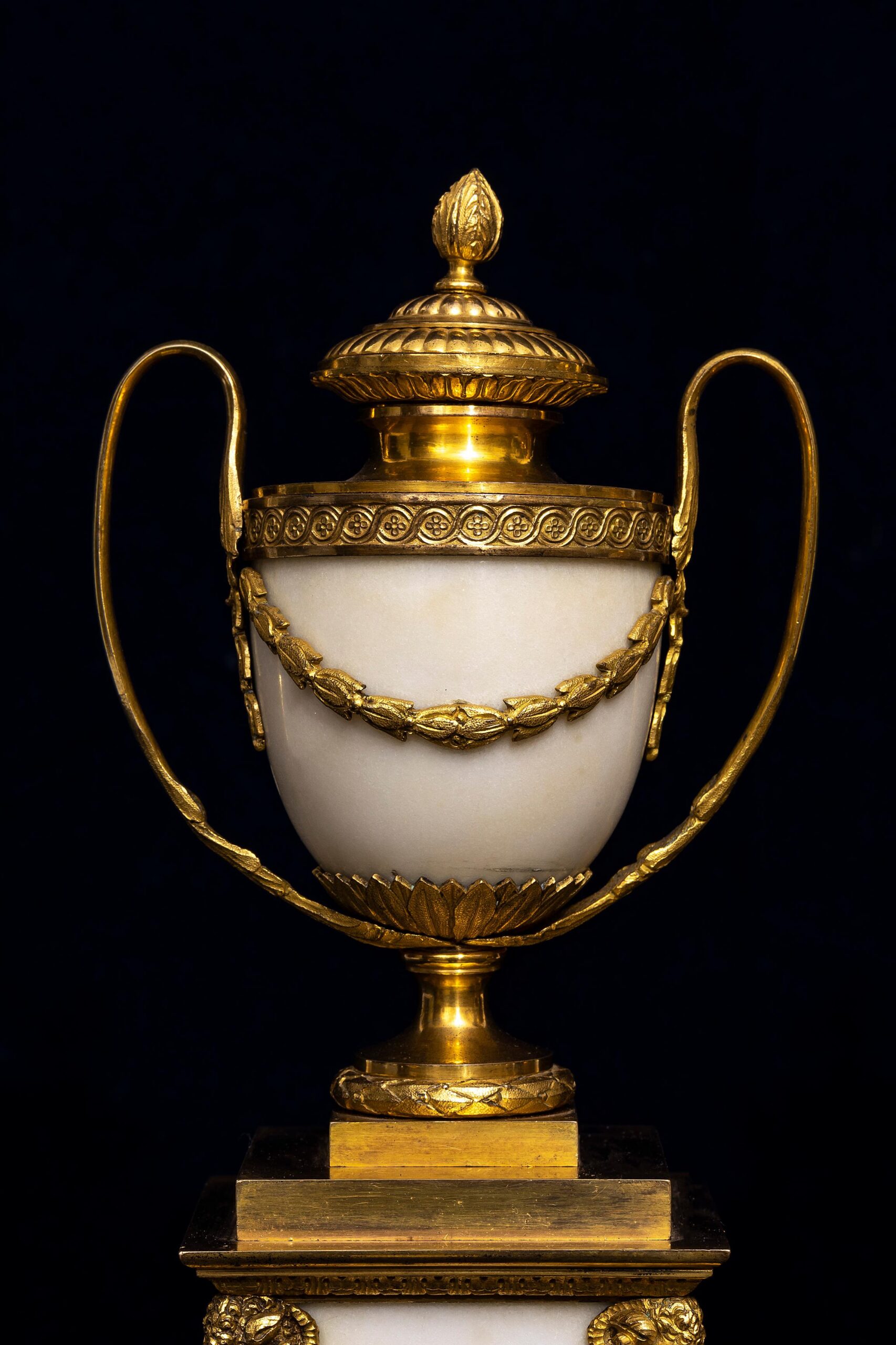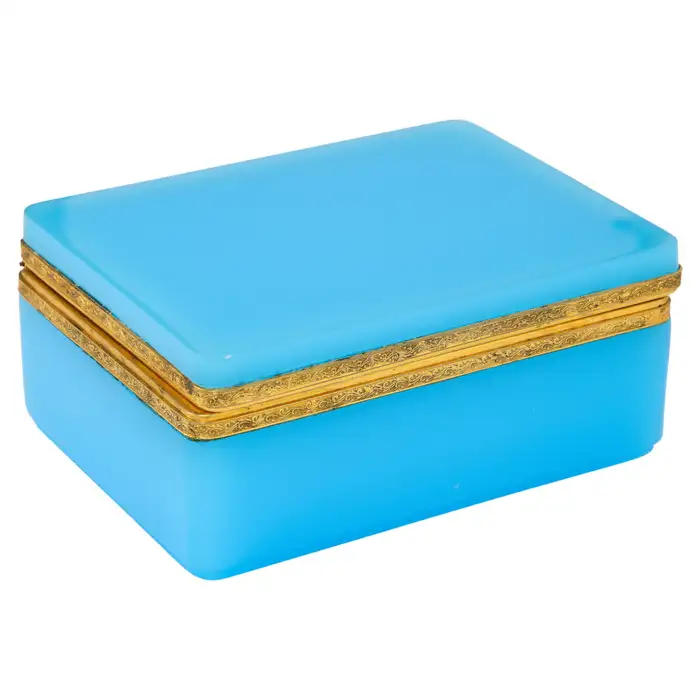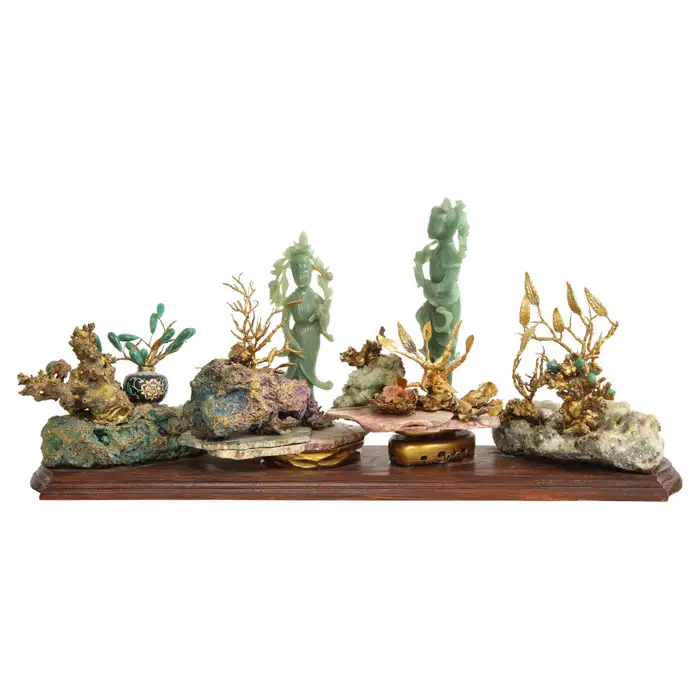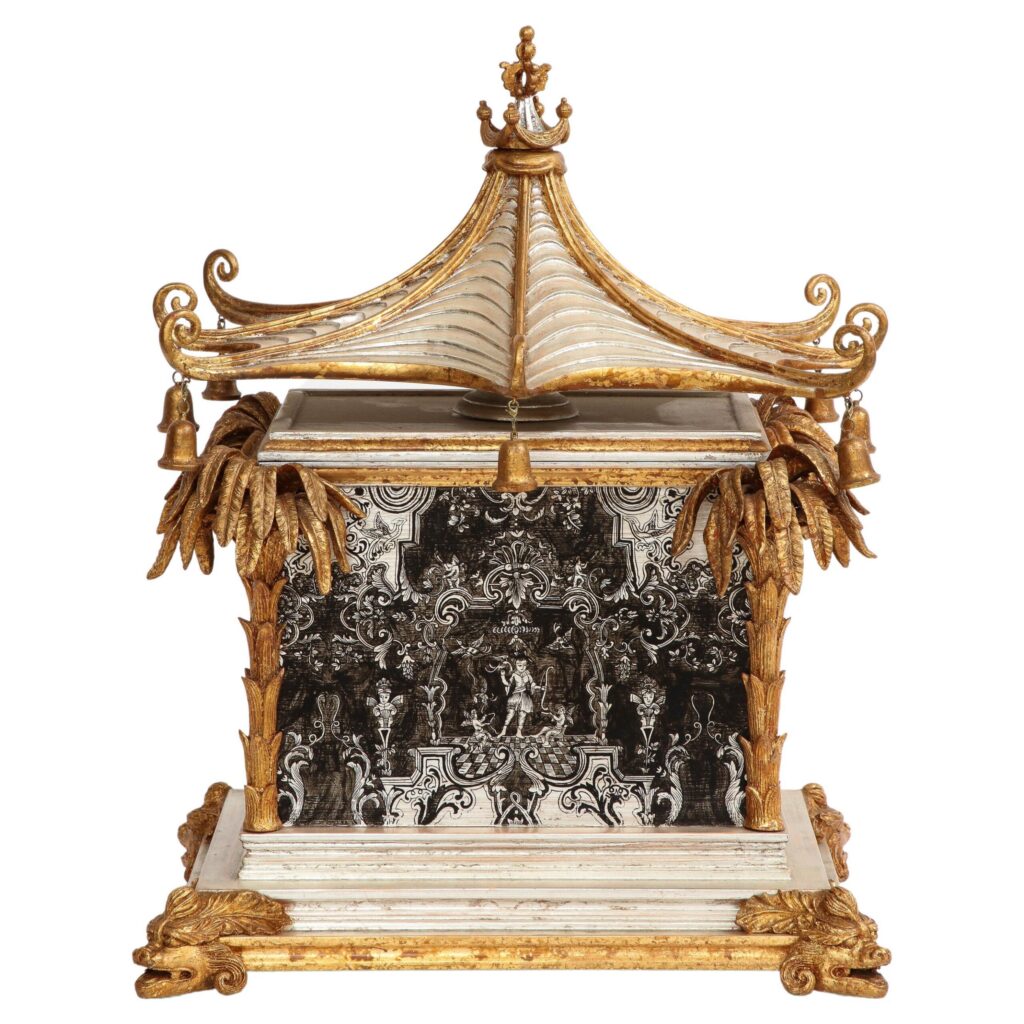Pair 18th C. English Matthew Boulton Ormolu Mounted Carrara Marble Cassolettes
$152,500.00
+ Free ShippingAvailability: 1 in stock
Product Description
A Magnificent, Exceptionally Rare, Museum Quality Pair of 18th Century English Ormolu Mounted, Hand-Carved and Hand-Polished Carrara Marble Cassolettes, By Matthew Boulton. These beautiful ormolu-mounted white marble cassolettes are by Matthew Boulton (1728-1809) and John Fothergill (1730- circa 1782) published in their Pattern Book No. 1 (page 171, figure t) and reproduced in Sir Nicholas Goodison’s Ormolu: The Work of Matthew Boulton (New York, 1974, page 383, figure 161).
Josiah Wedgwood (1730-1795) was a close friend of Boulton’s and his patterns are thought to be the source for the medallions used on the plinths of these. Boulton’s medallions of classical figures are almost identical to the cameos and intaglios made by Wedgwood and his partner James Tassie.
Molds for these examples can be found in the Wedgwood Collection at the Victoria & Albert Museum. All derive from the same classical source of Renaissance gems. Many gem collections in Europe were widely published at this time and Boulton’s library contained A. F. Gori’s Museum Florentinum (1731-1766), in which gems from the Medici collection were engraved.
The subjects of the medallions on this pair are: Pomona, a Roman goddess of fruit trees, gardens, and orchards, and depicted carrying a basket on her head overloaded with fruit, tumbling to the ground, shown once on each vase. Hygeia, once on each, with an olive branch in her right hand, as seen in Tassie’s reproduction of Valerio Belli’s gem, and holding a snake in her left hand over an altar. This was produced by Wedgwood both as an intaglio and as a cameo. Venus & Cupid, only on one vase, showing Venus leaning against a column with a pike, and giving a helmet to Cupid. Aesclepius, Greek GD of medicine, only on one vase, depicted with a snake wrapped around his staff .The last medallion subject is either Diomedes or Perseus, shown once on each vase, depicted as a conquering hero. Boulton asked patrons to choose from a limited repertoire of motifs, and therefore each vase or pair of vases is adorned with their own combination. Boulton used nine medallion subjects on recorded vases of this type.
PROVENANCE & COMPS
Another pair of this model, with slightly less elaborate lids and finials, from a private collection are illustrated in Goodison’s Matthew Boulton: ORMOLU, (page 379, figure 153). A further example is in a private New York collection. This pair, which was acquired from Hotspur in 1981, was formerly in the Collection of Marjorie Wiggin Prescott, sold Christie’s, New York, 31 January 1981, lot 76. The Prescott Collection was one of the most important English furniture collections of its time. The sale consisted mostly of late 17th and 18th century English furniture ranging from rare early stumpwork pieces, hangings and other small objects, to some exquisite piece of Georgian walnut and mahogany furniture, including several previously in the Percival Griffiths Collection. A similar pair sold at Christies Auction 7821 THE BARRATT COLLECTION – FROM CROWE HALL, BATH, for 115,250 British Pounds, equivalent to $180,000 USD. Another pair sold at Christies Auction, 50 YEARS OF COLLECTING:DECORATIVE ARTS OF GEORGIAN ENGLAND, in 2003, for 201,250 British Pounds, equivalent to $326,025 USD. These are just a few examples out of many more that demonstrate the magnificent and importance of these museum quality cassolettes.
France, Circa: 1770
Height: 12 in (30.48 cm)
Diameter: 4.5 in (11.43 cm)
